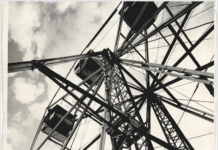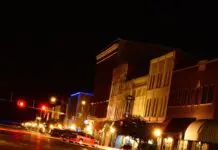Rick Harnish is in tune with what’s happening across the United States when it comes to high-speed rail development, and right now, that list is short. But as executive director of the High Speed Rail Alliance (HSRA), he has hope. He carries around in his head a map of cities he would love to see connected.
“If I were in charge, the federal government would be very focused on Chicago to New York, and Boston to Miami, and Chicago to Kansas City and then to Dallas-Fort Worth, San Antonio and onto Monterey,” Harnish says.
He defines high-speed rail travel as “half the time it would take to drive from station to station.”
Oklahoma, Harnish says, “should be working with Kansas, Texas and Missouri to link DFW with Kansas City.”
Given the current methods and levels of funding, high-speed rail in Oklahoma is not feasible, according to a statement from the Oklahoma Department of Transportation (ODOT) Rail Programs Division.
“Due to the cost of the California and Texas [high-speed] projects being in the multiple billions of dollars, Oklahoma is focused on extending current passenger rail in the state, the Heartland Flyer, north to Newton, Kan., to connect Oklahoma to both the Texas Eagle and the Southwest Chief, if funding from Texas allows continuation of the Heartland Flyer,” ODOT says.
ODOT began a high-speed intercity passenger rail study through a federal grant during the Obama administration, but the cost estimates were so high, the study was stopped.
“A high-speed rail alignment is required to be straight and flat, and would require new alignments,” ODOT says. “Right-of-way acquisition is only one of the challenges that stand in the way of high-speed rail in Oklahoma.”
Even if funds were available, ODOT says, “there would be several phases required, like a service development plan, National Environmental Policy Act, preliminary engineering, right-of-way acquisition and construction. Each of these phases would likely take years.”
Right now, the only high-speed project well out of the starting gate is a line that will connect Sacramento and San Francisco to Los Angeles and San Diego, with another stretching from Los Angeles to Las Vegas. Construction is underway on the California route, Harnish says, and preliminary work is happening on the Brightline West Las Vegas project. The goal is to open the Las Vegas line in time for the 2028 Olympics in Los Angeles.
“This will be the first to travel faster than 160 miles per hour,” Harnish says.


Development of the line between LA and Vegas, Harnish says, “was driven by a casino owner who knew this was important to his business. In some cases, the trains can run on tracks alongside the interstate, and this is a case where you could.”
The 218-mile Brightline West route will feature fully-electric trains traveling up to 200 mph alongside Interstate 15.
Fed up with congested highways and air travel price hikes and delays, a record number of people chose passenger rail last year. But the nation has never had a dedicated high-speed rail line.
“Right around World War II, we decided that the most important measurement of transportation performance was how fast you could drive from one place to another,” Harnish says. “Everything in governmental policy is around how fast can you drive, and ‘Can I park when I get there?’”
The federal government, and the states, need to start building high-speed lines in key places, Harnish says.
“And we need to work with the privately owned railroads to expand their infrastructure, so we can run a lot more passenger trains,” he continues.
Challenges include the fact that “private owners of existing railroads don’t want the liability of having high speed trains nearby,” Harnish says.

Oklahoma is part of a South Central region anchored by the fast-growing metropolitan areas of Dallas, Houston, San Antonio and Austin, according to the HSRA.
The region “also boasts globally renowned cities like New Orleans; natural wonders like the Ozark Mountains and the Texas Hill Country; and vibrant mid-sized cities like Little Rock, Oklahoma City and Tulsa,” the HSRA website says. “Momentum for connecting it with fast, frequent trains is building in several ways.”
A proposed Texas Central line would carry passengers the 240 miles between Dallas and Houston in less than 90 minutes. The private firm has received Federal Railroad Administration approval for an adapted version of trains used on the Tokaido Shinkansen line in Japan, which has had zero passenger fatalities or injuries since it began operation in 1964.
The electrified trains would operate on dedicated high-speed rails at maximum speeds of 205 mph for 18 hours per day, according to Texas Central, greatly reducing traffic on Interstate 45, one of the nation’s most deadly highways.
Rail is the most efficient form of long-distance transportation.
“It’s roughly a third more energy-efficient than driving, overall, and electrified trains are dramatically more energy-efficient than diesel trains or airplanes,” the HSRA says.






















